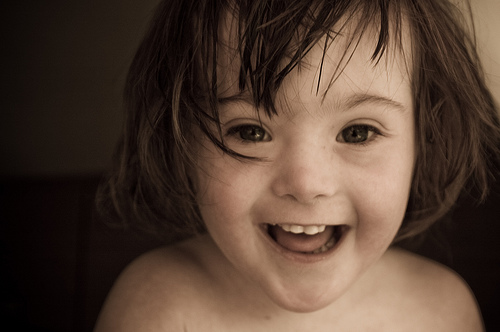
- •Introduction
- •What are the chromosome basics of Down syndrome?
- •How do the extra genes lead to Down syndrome?
- •What are the risk factors for conceiving a child with Down syndrome?
- •What are the characteristic features and symptoms of Down syndrome?
- •What type of prenatal screening is available for Down syndrome?
- •How is the diagnosis of Down syndrome made?
- •What about cognitive impairment in Down syndrome?
- •How is Down syndrome managed?
MINISTRY OF THE EDUCATION AND SCIENCES OF THE REPUBLIC OF KAZAKHSTAN
M. Auezov South Kazakhstan State University
Mutalieva B.J, Burkitbayeva M.S,
Baltashikova M.K, Muradova M.I
«General and molecular genetics»
Case study
research of concrete situation
for the speciality: 5B070100 – Biotechnology

Shymkent – 2012
Case study on the “General and molecular genetics” about research of concrete situation
(internal organized, structuraless, with planning mistakes, education in decision of problem and research of concrete situation).
SKSU named after M. Auezov, Shymkent city.
Academic case study intends for students of II course for speciality of 050701 “Biotechnology”, who studied “General and molecular genetics” discipline.
Examine and recommended to print by meeting of “Biotechnology” department
(minutes № ____ from «____»_____20 у.),
methodical council of Chemical-Technological faculty
(minutes № ____ from «____»_____20 у.).
Recommended to publication with methodical council of SKSU named after M. Auezov.
©South Kazakhstan State University named after M. Auezov
2011y.
Responsible for installment.
Press of SKSU
Tauke-hana 6 street Shymkent city.
Introduction
Method
Results
Discussion
The tasks to case study
Introduction
What is Down syndrome?
Down syndrome (also called Trisomy 21) is a genetic disorder that occurs in approximately 1 of 800 live births. It is the leading cause of cognitive impairment. Down syndrome is associated with mild to moderate learning disabilities, developmental delays, characteristic facial features, and low muscle tone in early infancy. Many individuals with Down syndrome also have heart defects, leukemia, early-onset Alzheimer's disease, gastro-intestinal problems, and other health issues. The symptoms of Down syndrome range from mild to severe.
Life expectancy for individuals with Down syndrome has dramatically increased over the past few decades as medical care and social inclusion have improved. A person with Down syndrome in good health will on average live to age 55 or beyond.
Down syndrome is named after Doctor Langdon Down, who in 1866 first described the syndrome as a disorder. Although Doctor Down made some important observations about Down syndrome, he did not correctly identify what causes the disorder. It wasn't until 1959 that scientists discovered the genetic origin of Down syndrome.
What are the chromosome basics of Down syndrome?
Genes on an extra copy of chromosome 21 are responsible for all characteristics associated with Down syndrome. Normally, each human cell contains 23 pairs of different chromosomes. Each chromosome carries genes, which are needed for proper development and maintenance of our bodies. At conception, an individual inherits 23 chromosomes from the mother (through the egg cell) and 23 chromosomes from the father (through the sperm cell).
However, sometimes a person inherits an extra chromosome from one of the parents. In Down syndrome, an individual most often inherits two copies of chromosome 21 from the mother and one chromosome 21 from the father for a total of three chromosomes 21. Because Down syndrome is caused by the inheritance of three chromosomes 21, the disorder is also called trisomy 21. About 95% of individuals with Down syndrome inherit an entire extra chromosome 21.
Approximately 3% to 4% of individuals with Down syndrome do not inherit an entire extra chromosome 21, but just some extra chromosome 21 genes, which are attached to another chromosome (usually chromosome 14). This is called a translocation. Most of the time, translocations are random events during conception. In some instances however, a parent is a balanced carrier of a translocation: The parent has exactly two copies of chromosome 21, but some of the genes are distributed to another chromosome. If a baby inherits the chromosome with the extra genes from chromosome 21, then the child will have Down syndrome (two chromosomes 21 plus extra chromosome 21 genes attached to another chromosome).
About 2% to 4% of people with Down syndrome inherit additional genes from chromosome 21, but not in every cell of the body. This is known as mosaic Down syndrome. These individuals may, for example, have inherited extra genes from chromosome 21 in their muscle cells, but not in any other type of cell. Because the percentage of cells with extra genes from chromosome 21 varies in people with mosaic Down syndrome, they often don't have all the typical physical characteristics and may not be as severely intellectually impaired as people with full trisomy 21. Sometimes, mosaic Down syndrome is so mild that it will go undetected. On the other hand, mosaic Down syndrome can also be misdiagnosed as trisomy 21, if no genetic testing has been done.
